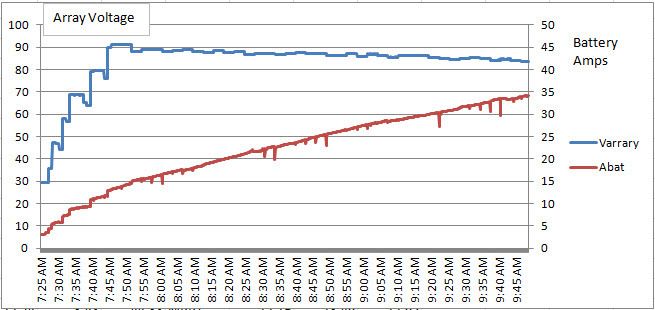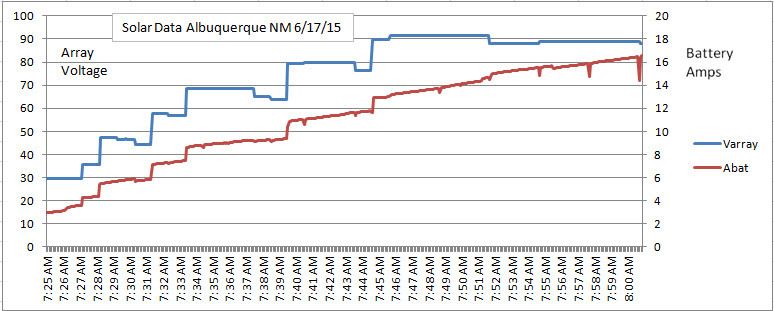CA_Traveler
Jun 20, 2015Explorer III
Solar and A Brief Encounter with Leafy Shade
Morning solar with a tree 40’ away. 3x250W series poly panels and 3 bypass diodes per panel. Past 7:50 AM the MPPT controller is decreasing the array voltage as it seeks the maximum power from the array as the sun rises. This is indicated by the increasing battery amps.

With a 30V panel each bypass diode will bypass 20 cells or about 10V. The expanded graph shows increasing panel voltage as the tree shadows leave the panels. You can see the basic 10V increase as the bypassed panel sections comes under full sun. ie 30V, 50V, 60V, 70V, 80V and finally 90V. The voltage variations between the 10V steps are due to the MPPT controller changing the array voltage as the controller adjusts for the maximum power output. The increasing battery amps during the decreased panel voltage confirm the successful search for maximum power. Expanded graph below.

The primary purpose of bypass diodes is to protect the shaded panel from excessive heat due to the voltage from other serial panels. It’s a nice benefit that this also allows a serially connected panel to produce usable power in partial shade.

With a 30V panel each bypass diode will bypass 20 cells or about 10V. The expanded graph shows increasing panel voltage as the tree shadows leave the panels. You can see the basic 10V increase as the bypassed panel sections comes under full sun. ie 30V, 50V, 60V, 70V, 80V and finally 90V. The voltage variations between the 10V steps are due to the MPPT controller changing the array voltage as the controller adjusts for the maximum power output. The increasing battery amps during the decreased panel voltage confirm the successful search for maximum power. Expanded graph below.

The primary purpose of bypass diodes is to protect the shaded panel from excessive heat due to the voltage from other serial panels. It’s a nice benefit that this also allows a serially connected panel to produce usable power in partial shade.